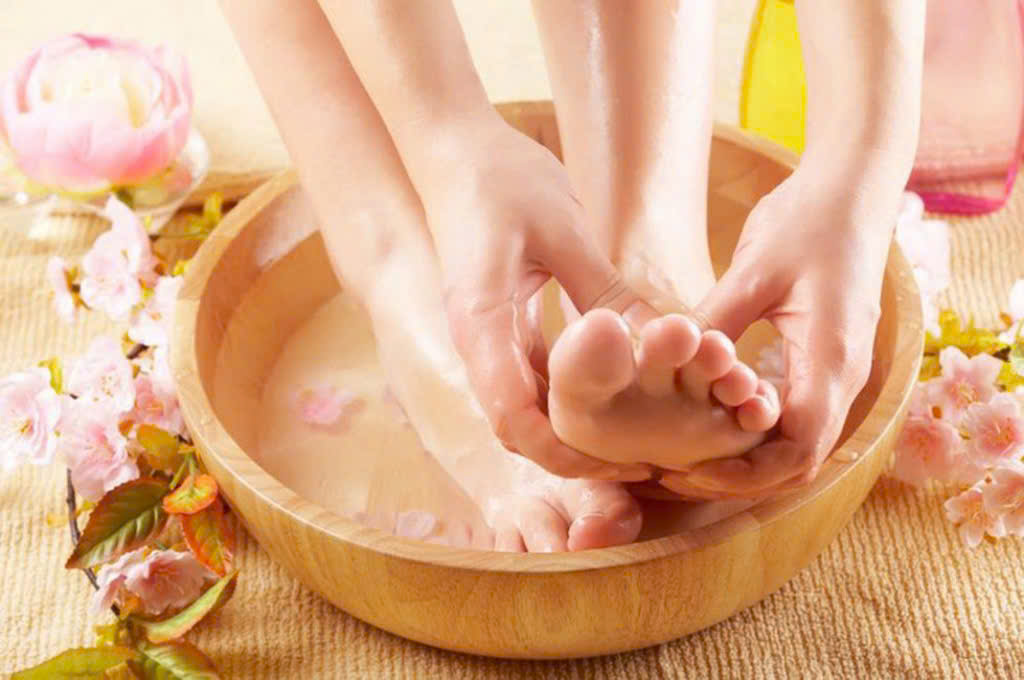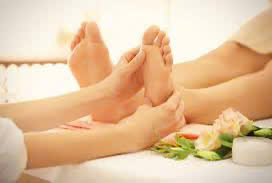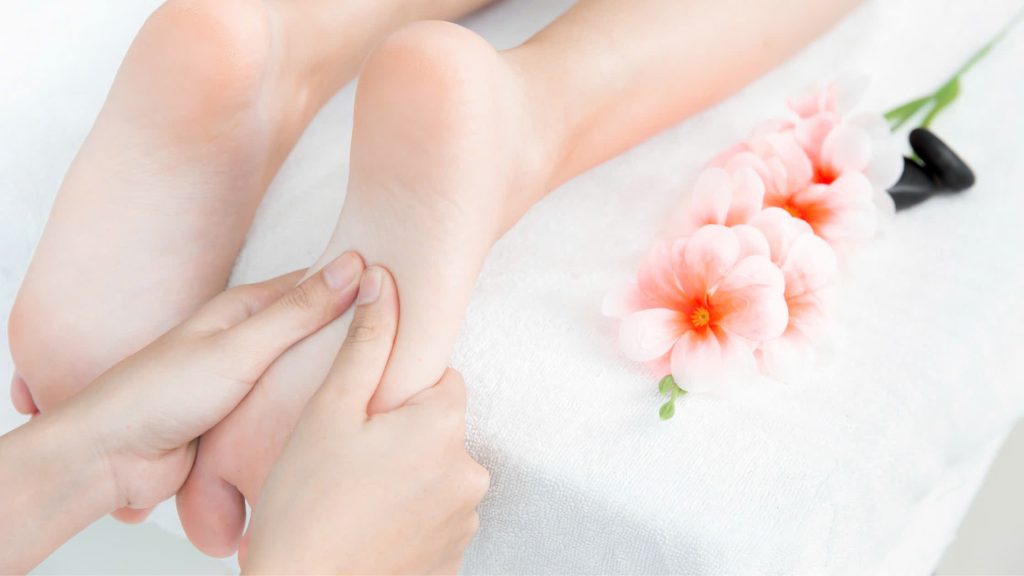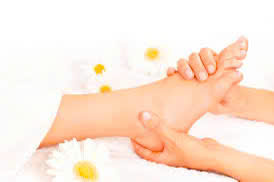Discover Reflexology Massage: Top 5 Benefits & How It Works
Reflexology massage is an ancient holistic healing technique that has gained popularity worldwide for its potential to promote health and relaxation. This therapy involves applying pressure to specific points on the feet, hands, or ears, which are believed to correspond to different organs and systems within the body. Many individuals seek out reflexology massage as a natural way to alleviate stress, enhance overall well-being, and address specific health concerns.
In this comprehensive guide, we will explore what is reflexology massage, delve into the top five reasons why you should consider trying it, explain how reflexology massage works, and highlight the various benefits it offers. Additionally, we’ll compare foot reflexology massage to other types of massage to help you understand what makes it unique.

Reflexology Massage
Reflexology massage is more than just a relaxing foot rub; it’s a scientifically-informed practice rooted in the belief that specific points on the feet, hands, and ears are connected to different parts of the body. The gentle yet targeted application of pressure aims to stimulate these reflex points to restore balance, improve circulation, and enhance functioning across various bodily systems.
This practice dates back thousands of years, with origins traced to ancient Egypt, China, and India, where it was used as a form of holistic therapy. Today, reflexology is practiced worldwide by trained therapists who combine traditional knowledge with modern understanding to promote health and alleviate discomfort.
What makes reflexology massage particularly appealing is its non-invasive nature and the ability to customize treatments based on individual needs. Whether you’re seeking relief from chronic pain, stress reduction, or simply a moment of tranquility, reflexology massage offers a versatile approach suitable for many people.

What is Reflexology Massage
Before diving into its benefits, it’s essential to grasp what is reflexology massage at its core. At first glance, it might resemble a typical foot massage, but its methodology and goals are distinct.
The Concept Behind Reflexology
Reflexology operates on the premise that specific zones on the feet, hands, and ears are connected through nerve pathways to various organs and structures within the body. By stimulating these zones, reflexologists aim to influence corresponding parts, encouraging the body’s natural self-healing processes.
The Science and Philosophy
While there remains some debate among medical professionals about the scientific basis of reflexology, many practitioners and users report positive outcomes. The philosophy aligns with holistic health principles, emphasizing balance, energy flow, and the interconnectedness of body systems.
Research studies have shown that reflexology can reduce stress hormones, improve circulation, and promote relaxation, supporting its role as a complementary health modality. However, it is important to view reflexology as an adjunct rather than a replacement for conventional medicine.
The Technique and Approach
A typical foot reflexology massage involves using thumbs, fingers, and specialized tools to apply pressure to specific reflex zones. The therapist may also incorporate gentle stretching and soothing strokes to enhance relaxation.
Practitioners often tailor sessions to individual health conditions, focusing on areas that need extra attention. The skill lies not only in locating reflex points accurately but also in applying the right amount of pressure to elicit therapeutic responses without causing discomfort.
Who Can Benefit?
Reflexology massage is suitable for a broad spectrum of individuals, from those seeking stress relief to people with chronic ailments. Its gentle nature makes it accessible to children, pregnant women, and seniors, provided they consult their healthcare provider beforehand.
In summary, what is reflexology massage? It is a systematic approach using targeted pressure on reflex zones to promote self-healing, balance, and relaxation. Its combination of ancient wisdom and modern techniques continues to attract those looking for a natural path to health.
Top 5 Reasons Why You Need to Try Reflexology Massage
If you’re contemplating whether to experience reflexology massage, understanding its compelling benefits can help you make an informed decision. Here are the top five reasons why you need to try reflexology massage:
1. It Promotes Deep Relaxation and Stress Relief
In our fast-paced world, stress has become an inevitable part of life. Chronic stress can weaken the immune system, lead to mental health issues, and exacerbate physical ailments. Reflexology massage offers an effective and natural way to unwind.
How It Achieves Relaxation
The gentle, rhythmic pressure applied during a session stimulates the parasympathetic nervous system—the branch responsible for rest and digest functions. By calming the nervous system, reflexology helps decrease cortisol levels, reduce muscle tension, and promote feelings of tranquility.
Personal Insights
Many clients report feeling profoundly relaxed after their first session, often drifting into light sleep or experiencing mental clarity afterward. The sense of calm can last days, making it an excellent tool for managing daily stress.

2. It Supports Detoxification and Improves Circulation
Our bodies gather toxins from environmental pollutants, processed foods, and stress. Effective detoxification relies heavily on proper circulation and lymphatic drainage.
How Reflexology Facilitates Elimination
By stimulating reflex points linked to the liver, kidneys, and lymphatic system, reflexology massage can enhance blood flow and lymphatic movement. This process assists in flushing out waste products and delivering oxygen and nutrients more efficiently.
Scientific Perspective
Although the detoxification claim isn’t universally proven, improved circulation undeniably benefits overall health. Enhanced blood flow can alleviate cold extremities, reduce swelling, and promote tissue repair.
3. It Alleviates Pain and Discomfort
From headaches and migraines to back pain and digestive issues, many common ailments can be alleviated through reflexology.
Targeted Pressure Points
Specific reflex zones correspond to pain-sensitive areas or dysfunctional organs. Applying pressure to these zones can modulate nerve signals, release endorphins, and reduce perceived pain.
Personal Experiences
Patients with chronic pain conditions often find reflexology to be a complementary method that reduces their reliance on medication and improves their quality of life.
4. It Boosts Overall Well-Being and Energy Levels
Beyond addressing specific health issues, reflexology massage encourages holistic wellness.
Balancing Body Systems
When reflex points are stimulated correctly, they can help rebalance energy flow throughout the body, leading to increased vitality and emotional stability.
Mental Clarity and Mood Enhancement
Many individuals report feeling more alert, happier, and better able to handle daily challenges post-treatment, attributing this to the body’s restored harmony.

5. It Enhances Better Sleep Patterns
Sleep disturbances affect millions worldwide, impacting mental and physical health.
The Sleep-Inducing Effects
Reflexology can activate relaxation pathways and reduce anxiety, paving the way for better sleep. Some practitioners specifically target reflex zones associated with the nervous system and sleep regulation.
Practical Benefits
Regular sessions may improve sleep quality, duration, and depth—contributing significantly to overall health.
In conclusion, these top 5 reasons highlight how reflexology massage can serve as an invaluable tool for enhancing physical health, mental clarity, and emotional resilience. Its natural, non-invasive approach makes it suitable for nearly everyone seeking a healthier, more balanced life.
How Reflexology Massage Works
Understanding how reflexology massage works involves exploring the underlying principles, physiological effects, and the specific techniques used during therapy.
Theoretical Foundations
Reflexology is based on the idea that the body contains a complex network of energy pathways—sometimes called meridians—that facilitate the flow of life force or qi. Blockages or imbalances along these pathways can cause health issues.
Applying pressure to specific reflex points is believed to unblock these energy channels, restoring harmony and promoting healing. Although this concept aligns closely with traditional Chinese medicine, modern interpretations focus on neurophysiological mechanisms.
Nervous System Interaction
One key way reflexology works is through affecting the nervous system. Stimulating reflex zones on the feet or hands sends signals via nerve endings to the central nervous system, influencing brain activity and autonomic functions.
This stimulation can result in:
- Release of endorphins and neurotransmitters that reduce pain,
- Modulation of stress hormones,
- Activation of relaxation responses.
Circulatory and Lymphatic Effects
Enhanced circulation facilitated by reflexology helps tissues receive vital nutrients while removing waste products. Improved lymphatic flow supports immune function and detoxification.
Endocrine and Immune System Regulation
Some researchers suggest reflexology can influence hormonal secretions, balancing endocrine function. This regulation can impact mood, metabolism, and immunity.
Mechanical and Psychological Factors
Aside from physiological effects, the tactile nature of reflexology provides comfort and reassurance, reducing anxiety and fostering mindfulness. The act of focused touch and attention itself can induce a meditative state conducive to healing.
The Role of Practitioner Skill
The effectiveness of how reflexology massage works also depends on the practitioner’s expertise. Precise location of reflex zones, appropriate pressure application, and sensitivity to client feedback are crucial.
Scientific Evidence and Limitations
While numerous anecdotal reports and some studies support reflexology’s benefits, scientific validation remains limited. Many effects are attributed to placebo responses or general relaxation. Nonetheless, the safety profile and absence of adverse effects make it a promising complementary therapy.
Summing Up
Overall, how reflexology massage works hinges on stimulating nerve endings, modulating physiological processes, and promoting relaxation and balance. Its multidimensional influences illustrate why it continues to be a valued modality in holistic health.
Top Benefits of Reflexology Massage
Engaging in regular reflexology massage can lead to a multitude of improvements in health and well-being. Here, we explore the top benefits of reflexology massage supported by both traditional beliefs and emerging scientific insights.
1. Enhanced Relaxation and Stress Reduction
One of the most immediate and noticeable benefits is profound relaxation. Reflexology activates the parasympathetic nervous system, which governs rest-and-digest functions.
Why It Matters
Chronic stress contributes to cardiovascular disease, weakened immunity, and mental health disorders. By reducing stress hormones like cortisol, reflexology supports resilience and emotional stability.
Practical Observations
Clients often report feeling lighter and calmer after sessions, with a lingering sense of peace. This relaxation can lower blood pressure, improve focus, and enhance overall mood.
2. Pain Management and Symptom Relief
Whether dealing with migraines, menstrual cramps, or musculoskeletal pain, reflexology offers a non-invasive method to manage discomfort.
Mechanisms at Play
Stimulating reflex zones linked to affected areas can trigger endorphin release, block pain signals, and improve blood flow to painful regions.
Case Studies
Many patients with chronic conditions such as fibromyalgia or arthritis have experienced notable pain relief following reflexology sessions, often combined with conventional treatments.
3. Improved Circulatory and Lymphatic Function
Better circulation means improved oxygen and nutrient delivery, while efficient lymph flow supports detoxification.
Physiological Impact
Reflexology encourages dilation of blood vessels and stimulates lymph nodes, bolstering immune defense and tissue repair.
Health Implications
Enhanced circulation can alleviate symptoms like cold extremities, swelling, and fatigue. It also promotes faster recovery from injuries.
4. Emotional and Mental Clarity
The calming effects extend beyond physical benefits to include mental health advantages.
Emotional Balance
Reflexology can help reduce anxiety, depression, and mood swings by balancing nervous system activity and promoting the release of feel-good chemicals.
Cognitive Benefits
Participants often experience increased concentration, mental alertness, and emotional resilience, aiding daily functioning.
5. Better Sleep Quality
Restorative sleep is critical for health, and reflexology can facilitate this through relaxation and nervous system regulation.
How It Helps
Targeting specific reflex zones associated with sleep regulation can reduce insomnia and improve sleep cycles.
Long-term Outcomes
Consistent sessions may lead to sustained improvements in sleep patterns, resulting in higher energy levels and better overall health.
Additional Benefits
Other notable benefits include boosting immune function, improving digestive health, and alleviating symptoms related to hormonal imbalances. Furthermore, as a holistic therapy, reflexology massage encourages mindfulness and body awareness, empowering individuals to take active roles in their health journey.
Foot Reflexology Massage
While reflexology can be performed on various parts of the body, foot reflexology massage remains the most popular and widely practiced form.
Unique Aspects of Foot Reflexology
The feet contain the highest concentration of reflex points, making them particularly rich in therapeutic potential. Their proximity to the ground also symbolizes stability and grounding in traditional philosophies.
Techniques Specific to Foot Reflexology
Practitioners utilize thumb walking, finger pinching, and circular motions to stimulate reflex zones. They may also incorporate stretching or mobilization of toes and ankles to enhance outcomes.
Benefits Specific to Foot Reflexology
Because the feet reflect the entire body, working on them can produce comprehensive health benefits. Additionally, foot reflexology tends to be quicker to learn for therapists and easier for clients to relax during.
Popularity and Accessibility
Foot reflexology is often offered in spas, wellness centers, and even mobile clinics, making it highly accessible. Its simplicity and effectiveness contribute to its enduring popularity.
Complementary Practices
Foot reflexology can be combined with other therapies such as aromatherapy or meditation to deepen relaxation and therapeutic effects. It is also frequently used as a standalone treatment for stress, fatigue, and minor ailments.
Personal Experience and Cultural Significance
Many cultures have revered foot reflexology—like Vietnam’s foot massages and Chinese reflexology—for centuries. Its cultural significance underscores its long-standing reputation as a healing art.
How Reflexology Massage Differs From Other Types of Massage
While traditional massage therapies like Swedish, deep tissue, or Thai massage emphasize muscular manipulation, how reflexology massage differs from other types of massage lies in its focus, methodology, and intended outcomes.
Focus and Target Areas
Traditional massages typically aim to relax muscles, release tension, and improve flexibility. In contrast, reflexology targets specific reflex zones based on anatomical and energetic maps, aiming to influence internal organs and systems indirectly.
Techniques and Pressure Application
Most massages involve kneading, stroking, and stretching muscles. Reflexology employs precise thumb and finger pressures on predefined reflex points, often without direct contact with muscles.
Goals and Benefits
While muscle-focused massages primarily alleviate physical tension and improve mobility, reflexology seeks to restore energetic balance, stimulate organ function, and promote healing on a holistic level.
Compatibility and Integration
Both therapies can complement each other. For example, a massage combined with reflexology could address muscular pain and internal health simultaneously, providing a comprehensive treatment.
Perception and Experience
Reflexology often evokes a deeper sense of internal balance and subtle sensations, whereas traditional massages tend to emphasize physical relaxation and muscle release.
Scientific Perspectives
Scientific evidence supports the efficacy of both approaches but highlights their different mechanisms. Reflexology’s emphasis on neural and energetic pathways sets it apart from purely biomechanical approaches.
Conclusion
Discovering reflexology massage opens a pathway to holistic health that combines ancient wisdom with modern practices. With its focus on specific reflex zones, it offers a unique approach to fostering relaxation, alleviating pain, supporting detoxification, and promoting overall well-being. Understanding what is reflexology massage, appreciating the top 5 reasons why you need to try reflexology massage, and exploring how it works all underscore its potential as a powerful complementary therapy. Whether through foot reflexology massage or other forms, this practice provides a gentle yet effective way to nurture your body, mind, and spirit. Its distinctive approach, setting it apart from other massage modalities, ensures that more people can benefit from its holistic healing properties.https://www.google.com/knowledgegraphshares?sca_esv=41514daaec8f90aa&hl=vi&gl=vn&output=search&kgmid=/g/11ld8cgf50&q=Citymax+spa-+thai+massage-massage+home+service+bur+Dubai&shndl=30&shem=lspt11&source=sh/x/loc/act/m1/5&kgs
Conclusion
Reflexology massage stands out as a timeless healing art that harmonizes body, mind, and energy through precise stimulation of reflex points. Its ability to reduce stress, manage pain, boost circulation, and enhance emotional health makes it a valuable addition to any wellness routine. Whether you seek relaxation, symptom relief, or a proactive approach to health, giving reflexology massage a try could unlock a new dimension of well-being. Embrace this natural therapy and discover the profound effects it can have on your overall health and happiness.https://jobedubaispa.com/deep-tissue-massage-2/
